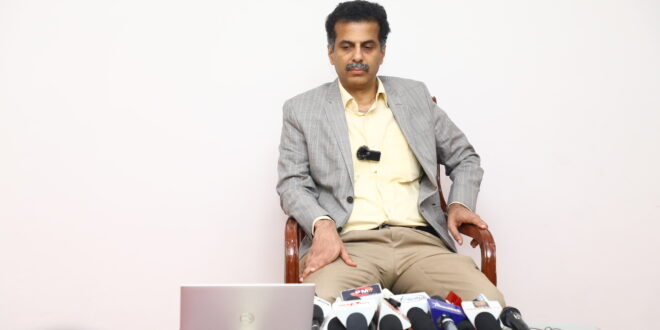Dr. Sengottuvelu G, leading interventional cardiologist of India performed two cases of novel orbital atherectomy procedures last week. Orbital Atherectomy was introduced in India and these two procedures were among the first few cases in India.
Dr. Sengottuvelu G, senior interventional cardiologist, Apollo main hospitals, Chennai and his team performed two cases using orbital atherectomy in patients having heavily calcified coronary arteries.
One patient among them was an elderly patient post bypass surgery 15 years ago having chest pain at rest and had severely calcified tortuous left anterior descending artery. Patient was at high risk for redo coronary artery bypass surgery and anatomy of his vessels was unsuitable for bypass surgery. He underwent successful ablation of calcium using Diamond Back orbital atherectomy device with slow and at high speeds.
Calcified lesions are difficult, challenging subsets to treat as they are hard and conventional balloon angioplasty do not work. There are several tools available to treat these hard blocks such as rotational atherectomy, intravascular lithotripsy, specialised balloons etc. Rotational atherectomy was only option available for several years. Shock wave intravascular lithotripsy was introduced few years ago and is based on ultrasound waves delivered with a balloon.
Orbital atherectomy is a novel therapy used for opening up calcified blocks ( plaques) before stenting. It has a 1.25 mm diamond-coated crown which ablates the calcium into fine particles approximately 2 micron in size ( sanding) and creates micro fractures in the calcium. The crown rotates in a circular motion within the vessel and it acts both during forward and backward movement. Device can be operated at low and high speeds and is decided based on the anatomy of the patient.
The availability of this device adds another option to treat these calcified blocks. It is particularly helpful in large vessels with long calcified eccentric lesions. The device has a learning curve and operator needs to be trained.
The team has successfully done several innovative precision stenting techniques in complex lesions with good results.
 Expressnews
Expressnews









